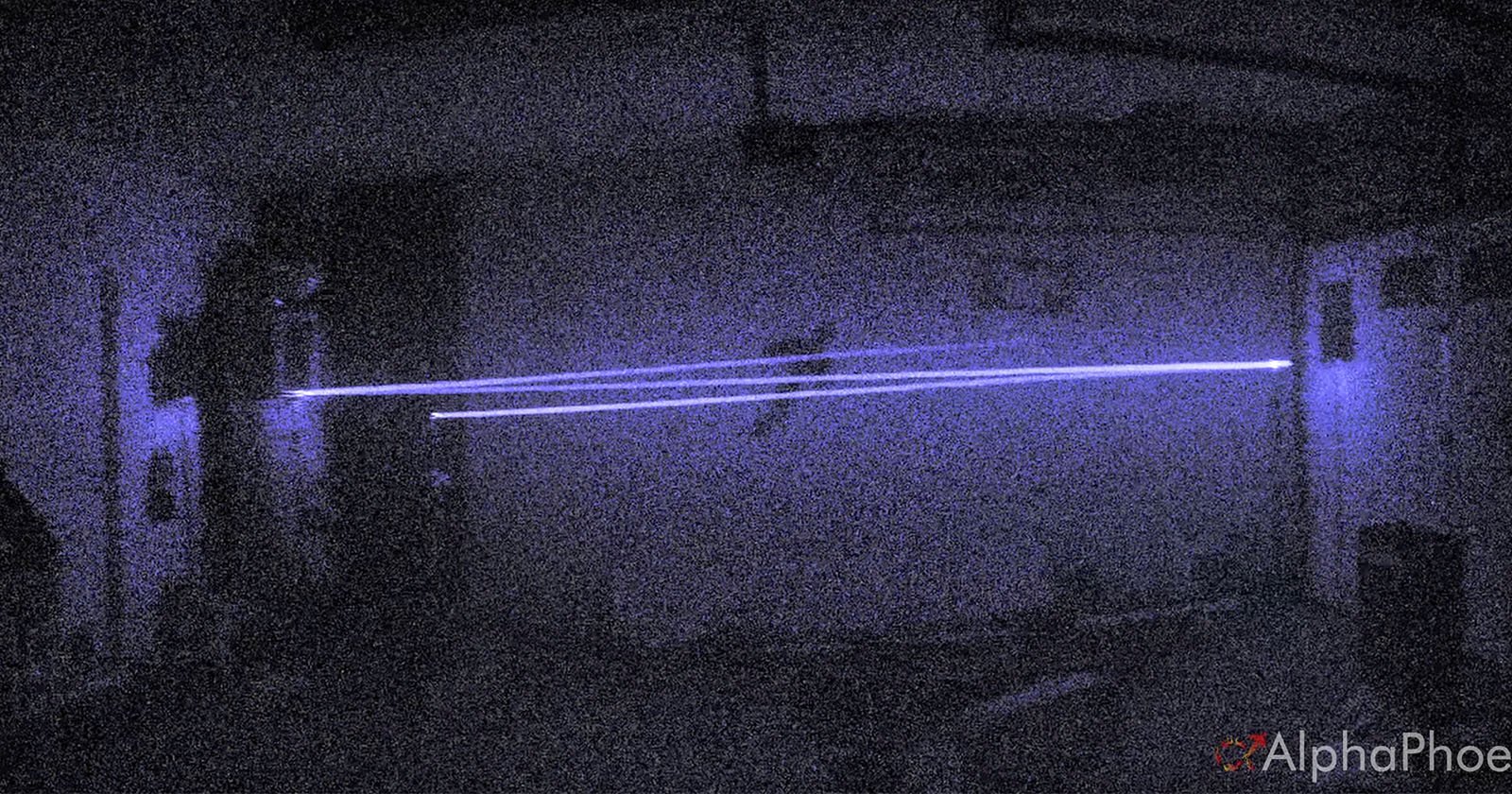Copyright PetaPixel

Brian Haidet of the AlphaPhoenix YouTube channel has recorded a laser beam at two billion frames per second (FPS), recording the path of light as it bounces across his garage. Haidet, who has a PhD in Materials Science, previously built a one billion FPS camera and iterated on that previous design to improve “virtually everything” over the course of the last 12 months. The camera itself consists of one mirror, one lens, two tubes, cable, “one of the weirdest camera flash bulbs probably ever built” — and a few hundred lines of python. “It’s not only fast enough to watch light move, it’s fast enough to see the past,” exclaims the ebullient Haidet. “Light moves about six inches, or 15 centimeters, per frame of this video. This beam of light is traveling at the Universe’s speed limit. Light in any reference frame will never move any faster or any slower than this speed.” The Catch While all of this sounds amazing, and the video recorded by Haidet really does show light traveling around his garage, there is a significant asterisk. Haidet’s two billion FPS camera can only record video in 1×1 pixels. Since he can only record one pixel at a time, Haidet has to keep pointing the camera in different directions which allows him to “tile” the image. Tiling is something astrophotographers do to get high-resolution images of celestial objects by combining lots of photos they have taken. “If all these videos are synchronized and we take many, many, many, one pixel videos, we can tile these videos next to each other and play them all back at the exact same moment and give something that looks like a video,” Haidet explains. The scientist argues that the camera still gives a representation of a true two billion FPS camera, while also saving a stupendous amount of money. “It really wouldn’t give any better of a results,” Haidet adds. Haidet previously created an infinite loop timelapse that spins so that the stars stay still. Using a Sony A6000 and a Samyang 12mm, he focused on the North Star and rotated the images at the same speed as the Earth’s movement.



